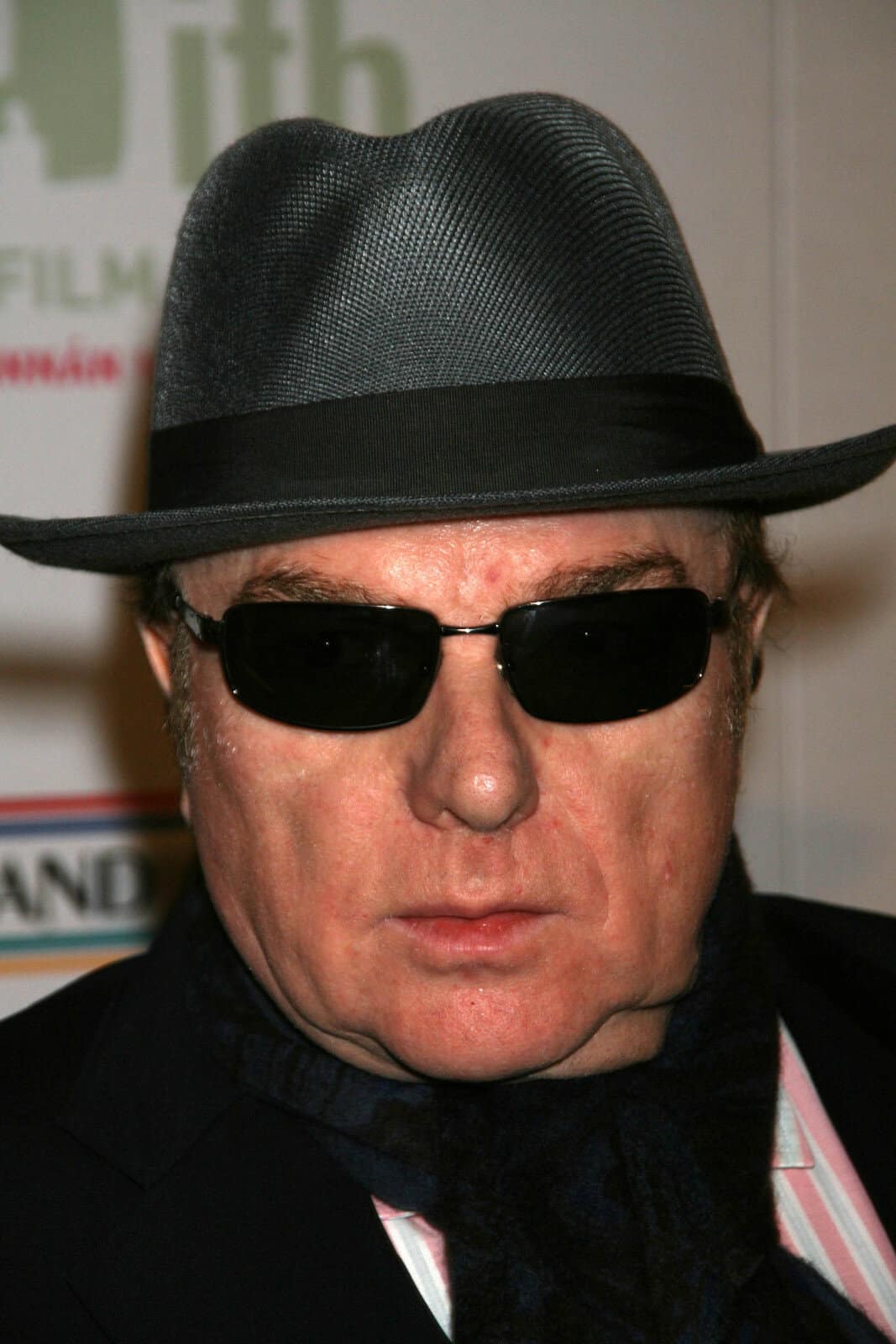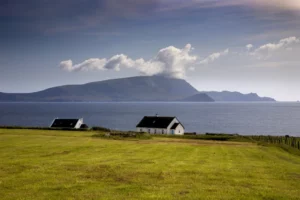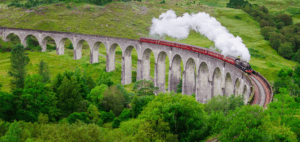Van Morrison’s Remarkable Trail

Updated On: April 20, 2024 by Noha Nabil
Van Morrison
George Ivan Morrison – or Van Morrison- was primarily known as an Irish singer, songwriter, instrumentalist and producer. He was influenced by some of the places that formed a significant part of his early life, and thus, he referred to them in the songs he wrote.
Northern Irish singer-songwriter Sir George Ivan Morrison was born on 31 August 1945 in Belfast, Northern Ireland. “Van the Man” started his professional career in the late 1950s but found fame in the 1960s as the lead singer of the R&B band Them.
His First Band
“The Story of Them reads like a map of Belfast, the city defined by music,” Eamonn Hughes, who recently edited a collection of Morrison’s lyrics, says. “He writes about playing in the Spanish Rooms, on the Falls, and in the Maritime Hotel.
He talks about the blues coming rolling down Royal Avenue. There’s a deliberate sense of recasting the city in terms of its music, and the music he’s talking about isn’t the music that people usually associate with Belfast.”
Van Morrisons Career
Afterwards, he established a solo career by releasing the hit single “Brown Eyed Girl” in 1967. His career flourished throughout the 1970s with another hit single, Moondance, and several acclaimed albums and live performances.
He is a two-time Grammy Award winner and has been knighted for services to the music industry and tourism in Northern Ireland.
Influences in Van Morrison’s Life and Music
Morrison’s father had one of the largest record collections in Ulster, so he “grew up listening to artists such as Jelly Roll Morton, Ray Charles, Lead Belly, Sonny Terry and Brownie McGhee, and Solomon Burke”.
The influences he gained during his childhood, Morrison once said, “I wouldn’t be where I am today. Those guys were the inspiration that got me going. If it wasn’t for that kind of music, I couldn’t do what I’m doing now.”
His father’s record collection exposed him to all genres of music, such as blues, gospel, jazz, folk music, and country music.
The Start of Morrisons’ Success
Becoming an influential figure in Van Morrison‘s life, his dad put him on the path to success by buying him his first acoustic guitar. When he was just eleven years old.
A year later, Morrison formed his first band, and they played at local cinemas with Morrison as the lead. At fourteen, he talked his father into buying him a saxophone and took lessons in tenor sax and music reading.
He joined several bands where he met lead vocalist Deanie Sands, guitarist George Jones, and drummer and vocalist Roy Kane. The group later became known as the Monarchs.
Morrison played in a showband with his friend, Geordie (G. D.) Sproule, whom he later credited as being one of his biggest influences.
At age 17, Morrison toured Europe for the first time with the Monarchs, now calling themselves the International Monarchs.
Brown Eyed Girl and The Symbolism of his Songs
The 1967 song, Brown Eyed Girl, was inducted into the Grammy Hall of Fame in 2007. One of Van Morrison’s most popular and acclaimed songs, Brown Eyed Girl, reached number ten on the US charts in 1967 following its release.
In 1993, the song “Big Time Operators” was released, alluding to his dealings with the New York music business during this period.
His 1968 song “Astral Weeks is about the power of the human voice – ecstatic agony, agonising ecstasy,” as described by Barney Hoskyns.
The album was reviewed by Rolling Stone magazine in 2004, saying: “This is music of such enigmatic beauty that thirty-five years after its release, Astral Weeks still defies easy, admiring description.”
Van Morrison’s Moondance (1970) reached number twenty-nine on the Billboard charts, becoming his first million-selling album. While Astral Weeks had a sorrowful tone, Moondance was more optimistic.
Songs and Album Themes
His songs gained wider acclaim from both the public and the critics alike. Morrison’s music in the 1980s focused on the themes of spirituality and faith.
A review of A Sense of Wonder, Morrison’s 1985 album, in Rolling Stone magazine described it as a “rebirth (Into the Music), deep contemplation and meditation (Common One); ecstasy and humility (Beautiful Vision); and blissful, mantra-like languor (Inarticulate Speech of the Heart).”
Later on, his music became more contemporary with songs such as “Someone Like You”, which has been featured subsequently in the soundtracks of several movies, including French Kiss (1995), Someone Like You (2001) and Bridget Jones’s Diary (2001).
The 1989 album Avalon Sunset is considered deeply spiritual while also containing songs that “deal with full, blazing sex, whatever its churchy organ and gentle lilt suggest”. Morrison’s songs’ most prominent themes are “God, woman, his childhood in Belfast and those enchanted moments when time stands still”.
Stage Fright and Anxiety
Although Van Morrison had been established as a world-renowned artist by then, he began experiencing stage fright when performing as the number of audiences increased along with his growing fame in the 1970s.
He became anxious on stage and could not maintain eye contact with the audience. In an interview about performing on stage, he said, “I dig singing the songs, but there are times when it’s pretty agonising for me to be out there.” In an attempt to control his anxiety, he took a brief break from music, and then he started appearing in clubs with smaller audiences.
Van Morrison improved his performing skills since his performance at the Band’s farewell concert was so impressive that Martin Scorcese filmed it for his 1978 film, The Last Waltz.
He even joined the performance of The Wall – Live in Berlin, which drew an estimated crowd of five hundred thousand people and was broadcast live on television on 21 July 1990.
How Belfast and Christianity Influenced His Music
Morrison has written numerous songs focusing on yearning for the carefree days of his childhood in Belfast. Some of his song titles are named after locations he grew up in or around, such as “Cyprus Avenue”, “Orangefield”, and “On Hyndford Street”.
His lyrics show the influence of the visionary poets William Blake and W. B. Yeats and others such as Samuel Taylor Coleridge and William Wordsworth. Biographer Brian Hinton believes that “like any great poet from Blake to Seamus Heaney, he takes words back to their origins in magic. Indeed, Morrison is returning poetry to its earliest roots. As in Homer or Old English epics like Beowulf or the Psalms or folk song, words and music combine to form a new reality.”
American composer, singer, and songwriter Paul Williams described Morrison’s voice as a “beacon in the darkness, the lighthouse at the end of the world.”
The Van Morrison Trail
In 2014, Morrison established a “Van Morrison Trail” in East Belfast in partnership with the Connswater Community Greenway. The 3.5-kilometre trail takes the traveller across eight locations that were important in Van Morrison’s life and that were inspirational to his music.
This trail leads you through the east Belfast, where Van Morrison spent his youth.
“Belfast is my home. It is where I first heard the music that influenced and inspired me, where I first performed, and where I have referred back to many times in my songwriting over the past 50 years.”
It’s an excellent opportunity to visit some places that Morrison knew as a child and influenced his character, eventual career and music.
Growing up in East Belfast
“I grew up in a kitchen house in Greenville Street in Bloomfield. East Belfast was famous for its rows of kitchen houses. They were small and compact and always kept perfectly clean.
I remember my mum and other women in the street doing the ‘half-moon’ wash of the footpath outside the front doors. These streets were adventure playgrounds for young boys like Van and myself.
On a cold winter’s night, we would pour water along the street, watch it freeze and use it as a slide. In the summer days, we used to head up to a nearby unused rail cutting at North Road with strips of cardboard and slide down the steep sides of the dry grass. Orangefield was just a wonderful place.
It was hardly a house built on it then; for us young boys, it was perfect. A wilderness, a jungle, we could be Robin Hood one day or the Lone Ranger the next. We used to dig trenches as would-be soldiers in the sandhills of Orangefield.
‘Beechie River,’ Van featured in one of his songs, was a large stream flowing from Orangefield right down past Elmgrove School. To us, it could’ve been the Mississippi.
We built rafts to sail on it but didn’t get very far; we kept bumping into the old prams and other stuff dumped in it. Bloomfield was a great place to grow up in. We have all had incredible things happen in our lives, but it’s great to come together now and again to revive those landmarks and memories that meant so much to us back then. Thankfully, some of them are still here, and they probably will still be there when we are gone. “
– George Jones, Former band member and friend
Elmgrove Primary School
The Van Morrison Trail begins at Elmgrove Primary School, which Van Morrison attended for 7 years from 1950 to 1956.
Here I am again
Back on the corner again
Back where I belong
Where I’ve always been
Everything the same
– The Healing Game
The Hollow
Hey, where did we go, days when the rains came
Down in the hollow, playing a new game
Laughing and a-running, hey, hey
Skipping and a-jumping
In the misty morning fog with our, our hearts a-thumping
And you, my brown-eyed girl
The tall electricity pylons you’ll find on the trail located in the Hollow are referred to in both You Know What They’re Writing About and On Hyndford Street.
The Beechie
Connswater (1983) refers to a local river known as the Beechie River. The Connswater River forms in the Hollow, where the Knock and Loop rivers meet, and it flows through east Belfast, down to the sea at Belfast Lough.
Over and over again
And voices echoing late at night over
Beechie River
And it’s always being now, and it’s always being now
It’s always now
– On Hyndford Street
Hyndford Street
Van Morrison was born at 125 Hyndford Street, where he grew up and lived with his mother, a former singer and performer, and his father, an electrician.
On Hyndford Street where you could feel the silence
At half past eleven on long summer nights
As the wireless played Radio Luxembourg
And the voices whispered across Beechie River
And in the quietness, we sank into restful slumber in silence
– On Hyndford Street
Before his career took off, Van Morrison worked as a window cleaner to fund his love of music. He distinctly recalls all the sights and smells he encountered as he worked.
When the coal-brick man comes round
On a cold November day
You’ll be on the Celtic Ray
Are you ready, are you ready?
– Celtic Ray
Orangefield
Orangefield Park offered a wonderful escape for many of the children living in 1950s east Belfast from the narrow streets where they lived.
On a gold autumn day
You came my way in Orangefield
Saw you standing by the riverside in Orangefield
How I loved you then in Orangefield Like I love you now in Orangefield
And the sun shone on your hair When I saw you there in Orangefield
– Orangefield
Van Morrison also never forgot to pay tribute to his school Orangefield Boys’ School.
When I was a young boy
Back in Orangefield, I used to look out
My classroom and dream
– Got to Go Back
“As we all grew up in Bloomfield, the music took over for us would-be stars. We fancied ourselves as professional musicians even though we never left East Belfast to gig. Our circuit was places like The Wooden Hut on Abetta Parade, The Willowfield Harriers Hall on Hyndford Street and of course, The Brookeborough Hall on Sandown Road and last but not least, the infamous hut on Chamberlain Street.”
– George Jones
Belfast and Co. Down Railway
In his work, Van Morrison often refers to railways, probably referencing the Belfast & County Down Railway (BCDR) line, which once ran through east Belfast.
I think I’ll go on by the river
With my cherry, cherry wine
I believe I’ll go walking by the railroad
With my cherry, cherry wine
– Cyprus Avenue
Love to hear that evening train go by
Love to hear that evening train go by
‘Specially when my baby’s on my mind
– Evening Train
Cyprus Avenue
Van Morrison described Cyprus Avenue as “. . . a street in Belfast, a place where there’s a lot of wealth. It wasn’t far from where I was brought up, and it was a very different scene. To me, it was a very mystical place. It was a whole avenue lined with trees, and I found it a place where I could think.”
Way up on, way up on, way up on . . .
The avenue of trees
Keep walking down, in the wind and rain darling
When you came walking down, the sun shone through the trees
– Cyprus Avenue
Saint Donard’s
Van Morrison’s parents were married in St Donard’s Church on Christmas Day in 1941. The sound of the church bells ringing can be heard in On Hyndford Street, and Morrison also mentions the church’s six bells in the track Beside You.
In the evening
Just before the Sunday six-bells chime, six-bells chime
And all the dogs are barkin’
Way on down the diamond-studded highway where you
wander
And you roam from your retreat and view
– Beside You
The Van Morrison Trail is a magical journey of the life and times of an acclaimed international artist who is considered a treasure to Ireland and the entire world. Enjoy the opportunity if you’re ever in eastern Belfast! It should not be missed!
Let us know your Van Morrison experience in the comments below.
Also, don’t forget to check out some related blogs: Famous Irish People Who Made History in Thier Lifetime | CS Lewis Square | George Best Trail | CS Lewis: Chronicles of Narnia Trail | The Gruffalo Trail at Colin Glen Forest Park






